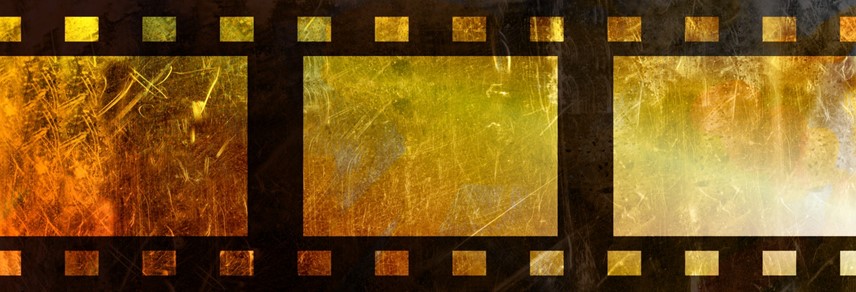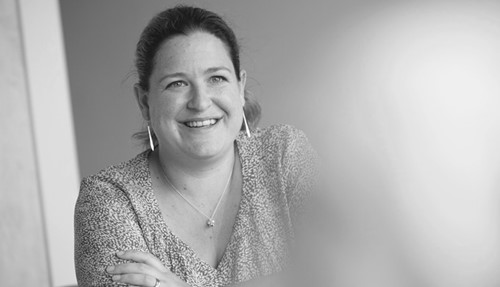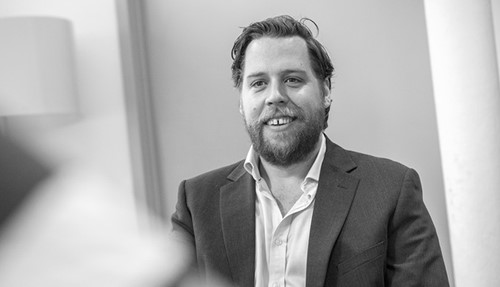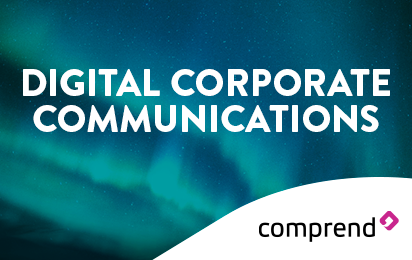
FIVE MINUTES WITH EMILY CLEMENTS AND CAM GUNN
Film has long been associated with famous actors, rolling red carpets and the glamorous pull of Hollywood. But changes in digital technology mean corporate film is becoming integral to many company and agency communications strategies. We take five minutes with Emily Clements and Cam Gunn of creative consultancy Radley Yeldar to discuss how well-crafted corporate film holds the key to successful audience engagement.
Why do films create such an emotional connection with the audience, compared to other media?
Emily: Film, because it’s an audio-visual experience it happens over time and there’s all sorts of nuance you can bring to it, whether that’s music or the narrative or use of colour or tone of voice – the emotional connection we get from dealing with other humans is probably easiest to replicate in films than in other media. And I think part of the craft of filmmaking is defining the right emotional triggers and dialling those up and down as you go through the filmmaking process. By understanding that that is one of the reasons to view is that emotional trigger, we think actually when looking in the corporate space we look at the emotions we’re trying to trigger in our audiences. We’d look at narrative and how, narratively, you create that connection. What’s the story you’re going to tell, how are you going to tell it? You then look at design, so actually is it live action, is it using live footage from organisations who’ve suffered reputationally to reinforce your point, or is it animation or character or design in the animation space you need to bring forward to create emotion?
Then we layer in music and that stirs the emotions most. And one of the things not to forget is the use of silence – that can be just as effective, depending on what you’re trying to achieve. And lastly colour is really underestimated sometimes in terms of how important it is. You find that the use of colour gradient in cinema is a subliminal trigger to an audience in terms of what they’re expecting to feel to a thing – whether suspense or fear or love or beauty. There’s all sorts of things we can weave together to create that emotive connection, but I think the key is working out what the right emotion is in the first place to be successful.
Has the role of corporate film changed? How?
Cam: It’s a change in ambition by the people that are wanting to communicate. A few years ago it used to be the film was the idea – ‘we have an idea, we’re going to do a film.’ I think it’s more now we have a challenge, and moving image becomes part of solving that challenge and there’s higher expectations on the performance of campaigns and moving image in particular. More people are tracking how many people have seen it all the way to the end, what the response has been in terms of follow up, and that’s why emotion is really important when it comes to corporate filmmaking. The emotion thing is important because we’ve got the data now which shows us how effective moving image can be, and when we start to use emotion and creativity instead of perhaps what was doing was always done.
Is Radley Yeldar creating more films for internal use, as well as external?
Emily: I’ve always done a combination of the two, but historically the internal stuff would have been very much informational or training focused, whereas now what we’re seeing is organisations really caring about what their employees feel and how important to it is to engage. Film is very useful from a remote and disparate workforce point of view, but it’s also important in terms of employee engagement and communicating purpose and the role of the organisation as well.
Cam: The current employee experience is really different from five, ten years ago. It comes back to that audience sophistication and more emphasis to the audience. Whether I’m an employee, or I’m a B2B buyer, or financial analyst, I’m still a person and my media habits have come on leaps and bounds because of technology. It’s become fairly critical for a new type of employee experience but also internal comms has been hamstrung by technology, so in some of these bigger corporates there were these older types of technology, historically. So now film doesn’t seem to such a limitation.
What makes an effective, stand-out and watchable corporate film?
Emily: There are four main topics. The first one is having a big idea, and whether that’s a big idea across the whole campaign or a big idea for an individual film, it’s actually having a strong central idea at the heart of what you’re setting out to do. But that big idea could be something that’s simple to execute, or it could be something that’s incredibly complex so it could be a big analogous piece.
Another is the emotional connection that we’ve talked about quite a lot already, and looking at master and craft to make sure what we do stands out in terms of the craft of filmmaking that you’re up against. Actually delivering on the craft of filmmaking is a great way to stand out. And the last one is innovation, so the new technologies that are emerging – your virtual reality, hollow lens, augmented reality, and new twists on old techniques like projection mapping. All of these things are ways you can help to stand out, it’s about working out what your goal is and what combination of those things you’re delivering.
Cam: Once you’ve brought those four elements together, it’s making sure to put it in front of the right people at the right time, so context is really important. To be effective, the film absolutely has to grab attention and you should never assume that you have someone’s attention; them giving you their attention is one of the most generous acts they can do. So never underestimate how important that is. The craft of the film itself also has to have the big creative idea, do the things we want it to do, but don’t let it sit on a shelf. If you really want it to be effective you need to push it out into the spaces where your audience is going to be. If you can match the craft with the ability to put it in front of the people you want to, then you’ve got a good recipe for effectiveness.

Emily Clements is head of moving image at Radley Yeldar

Cam Gunn is customer engagement team lead at Radley Yeldar

